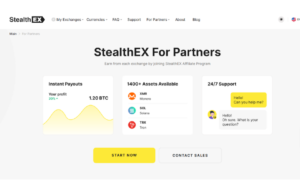Today, real-time data streams from apps, devices and systems are exploding – along with the business potential to tap into all that live data. Connecting these growing data flows to activate real-time analytics and decision-making seems beyond reach for most companies. Exciting new integration platform solutions unlock the real-time opportunity.
With the right approach to streaming integration, any organisation can start harnessing the power of data in motion today for a competitive edge tomorrow. Learn about iPaaS technology and how it works with real-time data.
The Role of iPaaS in Real-Time Data Integration
As businesses adopt technologies like IoT, the volume of real-time data from sensors, devices, and systems is exploding. But with real-time integration, accessing that data to optimise operations or enable innovations is possible. iPaaS solutions are purpose-built to handle real-time data with capabilities like:
- Real-Time Dashboards: visualise live data from multiple sources to monitor operational metrics.
- Event-Triggered Workflows: take instant action based on real-time data inputs.
- Data Routing: safely and securely transmits real-time data from IoT devices to applications.
- Live Analytics: generate insights from streaming data feeds.
- Prediction Models: analyse real-time data to determine probable future outcomes.
Benefits of Real-Time Data Integration with iPaaS
Organisations implementing real-time data initiatives with iPaaS can realise game-changing benefits:
1. Improved decision-making with up-to-date information
Integrating live data feeds from across the business allows managers at all levels to monitor the latest performance metrics, customer interactions, market movements and more. Rather than relying on day-old batched reports, decision-makers can truly take the pulse of operations. This real-time visibility allows them to respond to issues before they escalate rapidly or even prevent problems.
2. Enhanced customer experiences through timely data insights
By applying analytics and AI models to integrated real-time data from customer-facing interactions and operations, organisations can detect shifts in buying behaviour, service performance, web traffic and more to understand emerging needs. With this responsive understanding, organisations can instantly tweak recommendations, offerings and messages to align with customers’ wants.
3. Increased operational efficiency and agility
The infusion of real-time data into day-to-day operations powered by an agile iPaaS technology allows for continual adjustments to how organisations function based on live metrics. As demand spikes or wanes, capacity can scale up or down automatically. Predictive algorithms can help re-route production or logistics to avoid delays.
4. Better risk management and compliance monitoring
An integrated view of real-time monitoring data from IoT sensors, threat intelligence feeds, user activity logging and other security solutions allows rapid response to vulnerabilities and threats before they result in damage. Similarly, by centralising live data feeds relevant to compliance rules in regulated industries, organisations can demonstrate adherence and quickly adapt processes if needed.
Key Features to Look for in an iPaaS Solution
Here are some key iPaaS capabilities that enable an organisation to maximise value from real-time data:
- Scalability to instantly accommodate peaks in demand
- Built-in Connectors to easily link diverse data sources
- Data Management for reliable data feeds
- Analytics Integration to visualise and analyse in real-time
- AI & Machine Learning to drive predictive models
- Stateful Processing to apply context across data events
- Developer-friendly environment to build custom applications fast
Best Practices for Implementing iPaaS for Real-Time Data
Follow these leading practices to ensure iPaaS success with real-time data:
- Strategic planning and goal-setting: Define specific use cases for transforming operations, analytics, and innovation in real-time data.
- Ensuring data quality and consistency: With unreliable data, insights suffer. Perform due diligence on data reliability from sources.
III. Training and change management: Workflow changes driven by real-time data require user training and transparent policies.
The Bottom Line
Real-time data integration delivers operational visibility and customer insights for responsive innovation and smarter decisions. As more mission-critical processes depend on live data, choosing the right iPaaS solution accelerates realising the full benefits for competitive advantage today and results tomorrow.



































